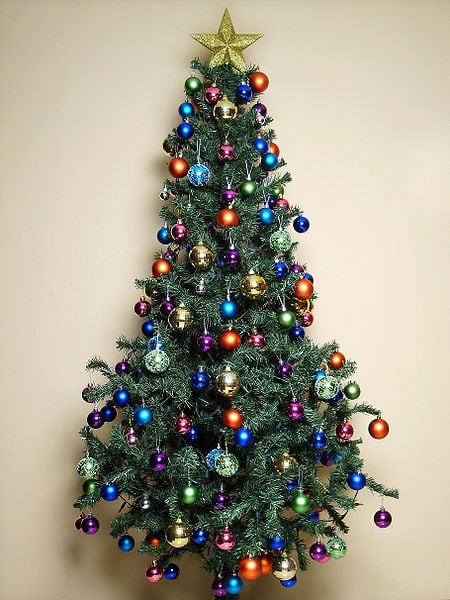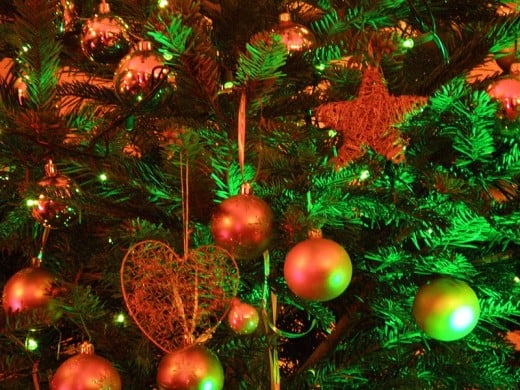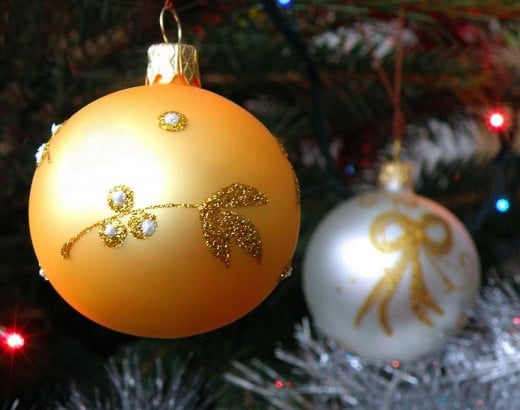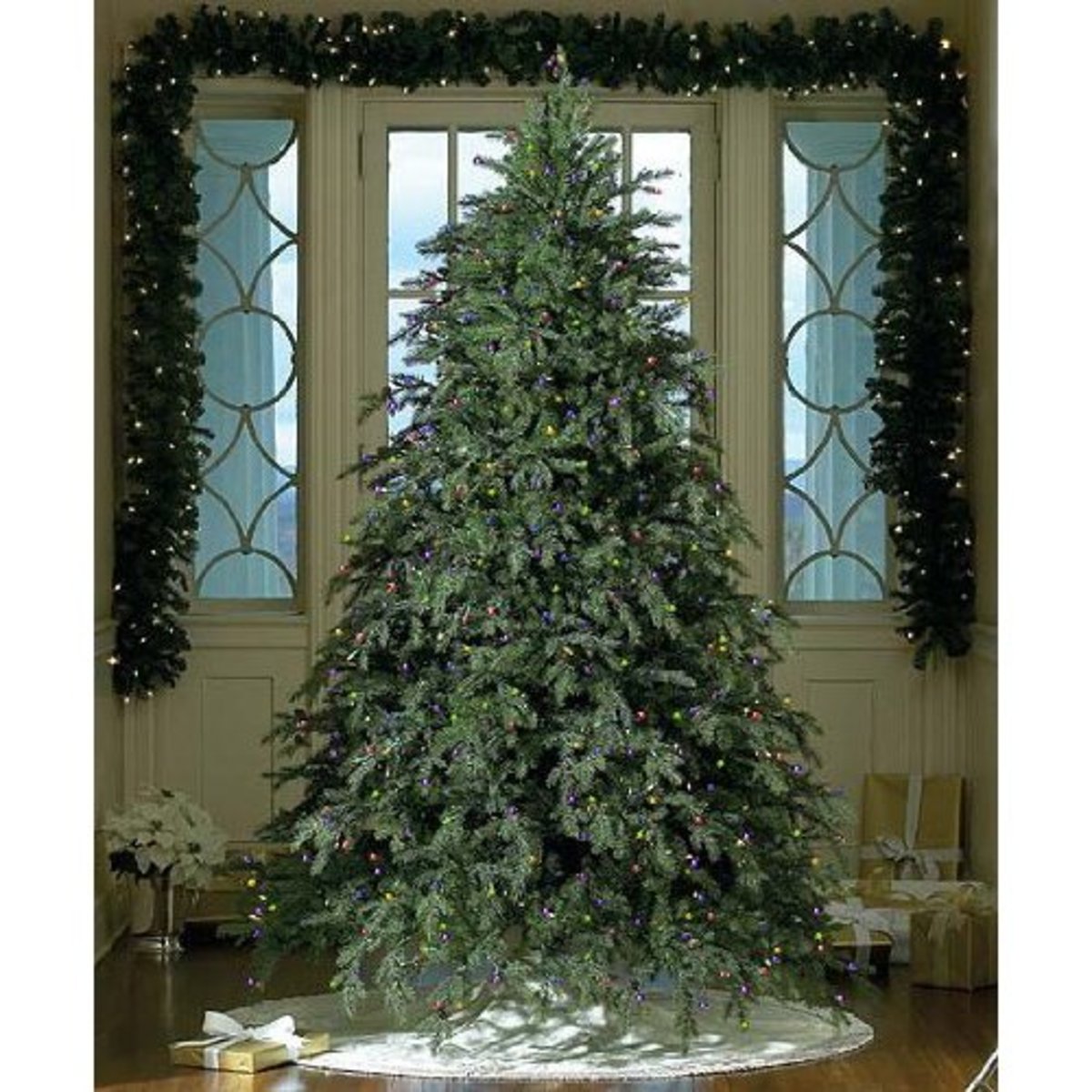Christmas Trees - A Short History

Why Have A Christmas Tree?
Nowadays a stunning Christmas Tree is the centrepiece of our festive decorations in many family homes. The whole theme or colour scheme of the year's decorating can be determined by how you trim your Christmas Tree. Putting up the tree is something that is keenly anticipated by the whole family, and getting out the decorations, tinsel and lights is the true sign that the holiday season has begun.
Searching through the boxes and tissue paper for your favourite ornaments, untangling the lights and testing the bulbs, draping the tinsel on the branches and making sure that the kids put the chocolate on the tree and not just eat it! But why do we bring these fir trees into our homes for the festive season, decorate them and light them up? What is the history of the Christmas Tree?
Pagan Origins
Their history goes back several thousands of years; back to a time when our pagan ancestors in Central Europe worshipped the nature spirits. There was a god or goddess in every rock, stream, lake or tree. The magical trio of oak, thorn and ash were especially venerated, and trees were believed to have special powers or to be where the sprites and fairies lived. So as with so many pagan beliefs, they became entwined with the new Christian traditions and customs when they arrived.
In the 7th century an English monk from Devon, legend has it that it was St Boniface, went to Thuringia in Germany to spread the Christian faith. He did a lot of charitable works and the story is told that he used the triangular shape of the fir tree to convey the meaning of the Holy Trinity. So from this time onwards the local people who had converted to Christianity, and who had previously worshipped the oak tree, started regarding the fir tree as their holy tree. By the time of the 12th century in Central Europe, fir trees were being hung upside down from the rafters of houses as a Christian symbol.

During the Middle Ages
The first festive fir tree to be decorated was in the Latvian town of Riga in 1510. It is also believed that Martin Luther put candles of a small fir tree to show his children how the stars shone in the dark, winter sky. In 1605 a fir tree was brought inside in Strasbourg and decorated with lighted candles, sweets, nuts and paper roses. By the mid-16th century German towns started to set up Christmas Fairs that sold everything that might be needed over the festive season, including gingerbread shapes and wax ornaments that were hung on the branches of their Christmas trees. Tinsel was also invented in Germany in the early 1600’s. It was made of silver up until the middle of the 20th century, and was made initially by a machine that pressed the silver into thin strips. The silver was very hard wearing, but unfortunately it tarnished very easily, especially with the smoke from the candles.

During Victorian Times
They were initially introduced into the United Kingdom by the Hanoverian kings in the 18th century. Their decorations were manufactured in Germany and consisted of tinsel, beads, candles and silver wire ornaments. The custom was to have a small Christmas tree decorated for each member of the family, and their gifts would be piled underneath.
However, the custom of decorating a Christmas tree did not really take off until the time of Queen Victoria and Prince Albert. They were a very popular royal couple and in 1846 the Illustrated London News showed a picture of the Royal Family standing around their Christmas Tree. This started the fashion for having a decorated fir tree during the festive season in the British Isles and the custom soon spread to America.
Many of the decorations would be hand made by the younger members of the family, and it became the custom to place an Angel on the very top branch. The evergreen branches would be illuminated by candles, which were put into wooden hoops for safety. Many of the glass baubles would have been manufactured in the small German town of Lauscha, which had been famous for glass-blowing since 1597.
In 1847 Hans Greiner started creating a unique type of bauble. They were created by a hand-blown process combined with moulds, and the inside of the ornaments were made to look silvery by using mercury or lead and later a mixture of silver nitrate and sugar water. They started to export the glass balls to the US in the 1880’s, after F W Woolworth discovered them on a trip to Germany. There are still about twenty small glass blowing firms in Lauscha and they have a famous Christmas-Ball Market every year on the first and second Sunday in Advent. The first glass Christmas tree balls to be manufactured in the United States were by William DeMuth in 1870 in New York.
How To Choose a Christmas Tree
Into the 20th Century
In 1844, Hans Christian Andersen published a fairy tale called ‘The Fir-Tree’ which was about a little fir tree who really wanted to grow up and be a much bigger one, and this book contains a good description of a Danish Christmas tree in the 19th century. The little fir tree was cut down to be a Christmas tree and is decorated with candles, toys, sweets, coloured apples and a golden star on the top. This was its moment of glory as the children of the house took the sweets and toys and listened to stories. After the festivities the poor thing was dumped in the attics and in the spring was taken outside to be chopped and burned.
As the 19th century progressed the Christmas trees in Victorian England got bigger and gaudier. They were over-decorated with as many ornaments, sweets and candles as the branches could hold, with lavish armfuls of tinsel draped over the branches. With the dawn of the 20th century, themed Christmas trees became popular and they would be decorated in a certain colour scheme or themed to a particular country like Egypt.
Artificial ones were invented in Germany in the 1880s and became more popular as the 20th century wore on. In modern homes these are often viewed as a better choice as there are no pine needles to hoover up and there are no hassles about disposal or re-planting it. Candles were also gradually replaced by electric lights, partly for convenience but mainly due to the fire hazards of having so many open flames. But many families still cling to the traditional fir tree as they do not want to forego the wonderful smell of pine that pervades the house, the deep green of the needles and the copious springy branches for hanging decorations.
Copyright 2009 CMHypno on HubPages
This content is accurate and true to the best of the author’s knowledge and is not meant to substitute for formal and individualized advice from a qualified professional.
© 2009 CMHypno



